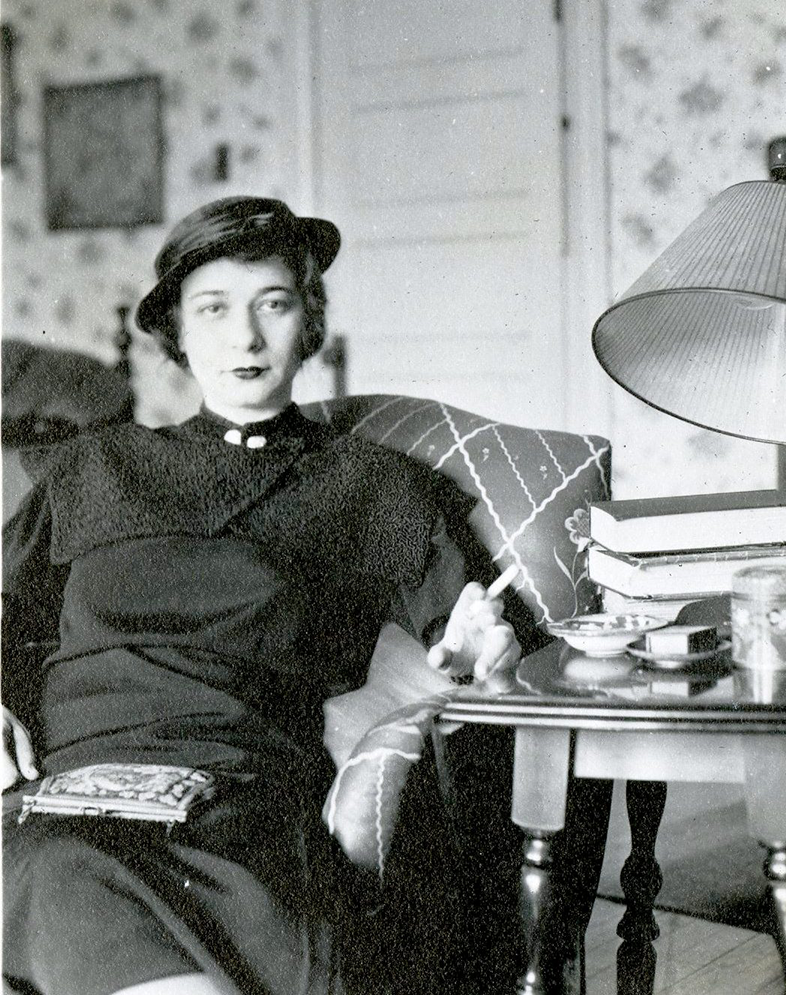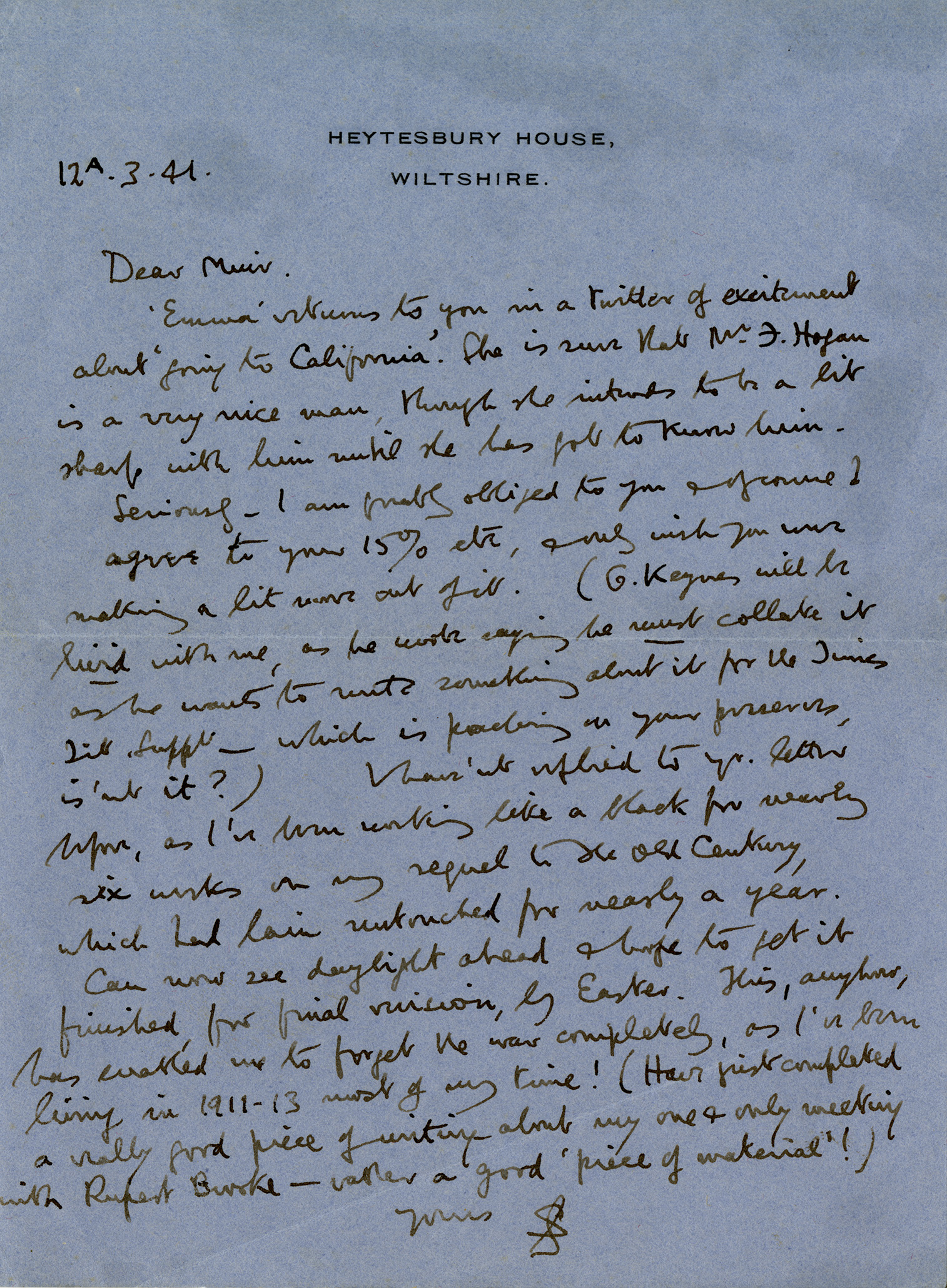

Emma’s Journey to Goucher
All old books have stories to tell of their owners and readers. Some clues—such as signatures, bookplates, and markings of previous owners—are present in the volumes themselves. Other parts of the story of a book’s provenance emerge from letters, auction catalogues, and sales records.
Goucher’s copy of the Philadelphia Emma was given to the college by the dedicated, knowledgeable Austen collector Alberta Hirshheimer Burke (1906-1975), a 1928 alumna of the college. The Philadelphia Emma, which Alberta purchased in 1945, is the gem of her world-class Austen collection.

Alberta began buying rare Austen editions and manuscripts in the 1930s, after marrying Baltimorean Henry G. Burke. Alberta continued to collect both rare materials and ephemera related to Austen over the next several decades. Her collecting was inspired and guided by Geoffrey Keynes’s 1929 Bibliography of Jane Austen, the first descriptive listing of historical Austen editions. Alberta marked up her copy of Keynes, which she called her “Bible,” as she discovered new editions unknown to him—including the Philadelphia Emma.
Alberta’s expertise on Austen was sought by many scholars, including David J. Gilson (1935–2014), who worked for many years to update and expand Keynes’s bibliography, eventually publishing his own Bibliography of Jane Austen in 1982. Gilson knew of only four copies of the Philadelphia Emma, of which Goucher’s was in the finest physical condition by far. (Others are missing pages or otherwise damaged.) We have since verified the existence of two more copies.
In addition to Goucher College, copies of the Philadelphia Emma are held at:
On the title pages of Goucher’s Emma are signatures reading “C. B. Dalhousie,” and on the endpapers are pasted-in papers reading “Countess of Dalhousie.” This evidence reveals that this copy, long before it was owned by Alberta Burke, was in the possession of Christian Broun Ramsay (1786–1839), a Scotswoman and noted plant collector.

Her husband, the 9th Earl of Dalhousie, served as Governor of Nova Scotia from 1816–1820. The Earl and Countess Dalhousie arrived in Nova Scotia in the fall of 1816 after over a month’s passage on the HMS Forth, a British Royal Navy forty-gun frigate. While we believe that the Countess was the first owner of this copy, little is yet known about her purchase and possession of Emma, or when and how the novel passed from her hands.
Nor do we know how this copy came to be found in Salisbury, England in the early twentieth century by its next confirmed owner, the noted World War One poet Siegfried Sassoon (1886–1967). Thanks to Keynes’ Bibliography—the same reference source that guided Alberta Burke’s collecting—Sassoon was well aware of the edition’s rarity when, in 1941, he decided to sell his copy at auction. On December 3, 1941, Sassoon writes to bookseller Percy Muir: “Emma returns to you in a twitter of excitement about going to California.”

The next owner of our Emma was the American bibliophile Frank J. Hogan, who added his own sumptuous bookplate to the endpaper below the Countess’s name. When Hogan decided to sell the copy in 1945, Alberta Burke spotted the auction record and pounced. As noted by her friend, the bibliographer David Gilson, these volumes have “crossed the Atlantic, twice!”
In 1975, when Alberta Burke died, the Philadelphia Emma came to Goucher College along with the rest of Alberta’s Jane Austen Collection. Other highlights of the collection—which numbers more than 1,000 items—include first English editions of all the Austen novels, many in multiple copies; translations; and books and periodicals from the late eighteenth and early nineteenth centuries on topics including architecture, fashion, and landscape gardening.